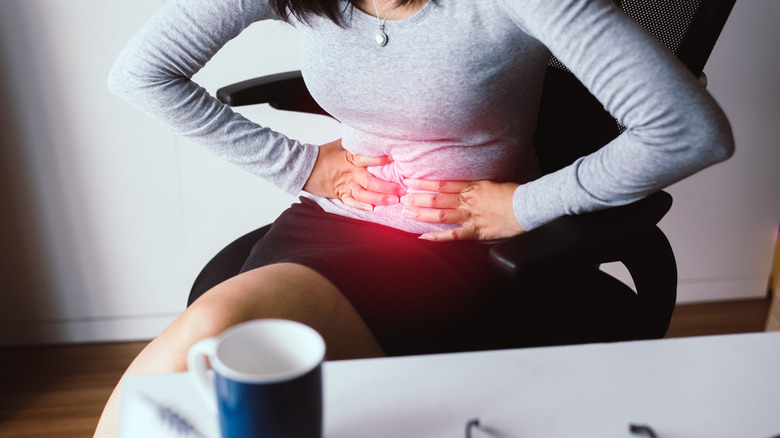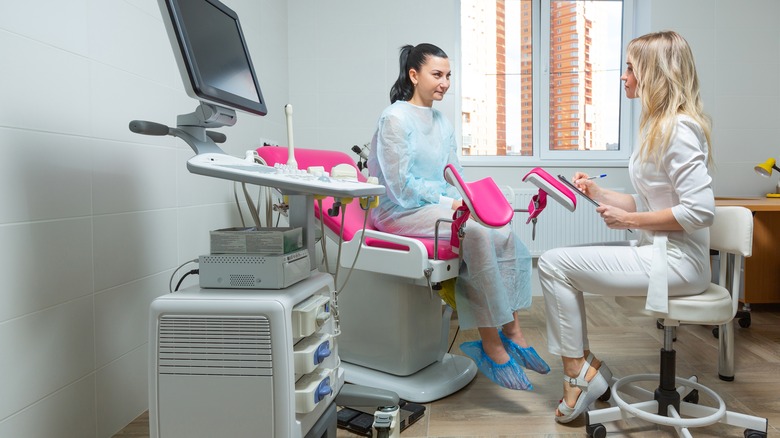If You Think You May Have Endometriosis, Here's What You Should Do
Great strides have been made in the area of women's health — and yet, due to the wide range of possible symptoms associated with endometriosis, it remains one of the most difficult conditions for doctors to diagnose (per Healthline).
According to the World Health Organization (WHO), endometriosis is a disorder that affects about 10% of women globally. It's a condition in which tissue, similar to that of the uterus, grows outside of the uterine cavity — most commonly onto the ovaries, fallopian tubes, and the tissue lining the pelvis (per Mayo Clinic). Healthline explains that during menstruation, hormones affect the overgrown tissue the same way as the uterine tissue. These hormones cause it to grow and bleed. Without anywhere for the tissue to shed and exit the body, inflammation ensues and can cause pain for many individuals.
Symptoms of endometriosis may vary widely from person to person. Some individuals are at an increased risk of developing the condition based on demographics or family history.
Symptoms and risk factors of endometriosis
Johns Hopkins Medicine reports that those who have a first-degree family member with the condition, as well as those giving birth for the first time over the age of 30 or with uterine abnormalities, are at an increased risk of having endometriosis. With that being said, any woman could potentially be affected. The symptoms can look vastly different from one person to the next, while some may not notice any symptoms at all.
The most common ways the disease tends to show up in the body include painful periods, abnormal or heavy menstrual flow, infertility, painful urination or bowel movements during periods, pain during or after intercourse, bloating, diarrhea, constipation, and nausea. The World Health Organization (WHO) notes that "there is little correlation" between the size of the endometrial lesions and pain. In other words, some individuals with large lesions have mild symptoms, while others with minimal lesions experience severe symptoms.
What to do before calling your doctor
If some of these symptoms sound a little too familiar and you're worried you might have endometriosis, there are a few things you should do. Calling your doctor with a list of symptoms might not get you too far, so Health recommends logging your symptoms. In your notes, keep track of when each symptom occurs with as much detail as possible, as well as when your period starts and ends. Because symptoms of endometriosis tend to occur at certain times during your menstrual cycle, this information can be helpful in obtaining a diagnosis.
Once your symptoms are good and logged, call and schedule an appointment with your regular ob/gyn. Health suggests it's best to see a gynecologist who's familiar with your history, as they'll have a better idea of your baseline. This can make it easier to notice abnormalities. At your appointment, voice your concerns and share your symptom history. It's important that you use this time to advocate for yourself, expressing the ways your symptoms affect your quality of life.
You may also want to request additional testing. One test can't tell you whether or not you have endometriosis, but a pelvic exam could indicate that you have scar tissue or cysts. An ultrasound might be able to reveal them further. If you don't feel heard or aren't satisfied with the outcome of your visit, Health suggests politely asking them to recommend another doctor for a second opinion.



